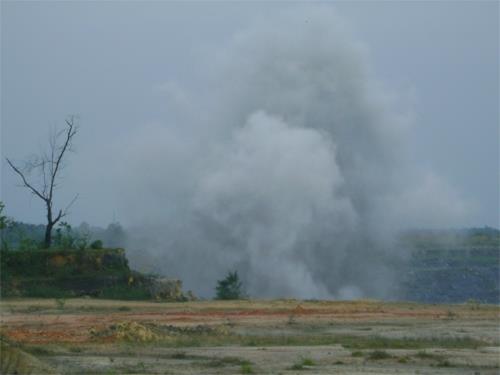INDOCHINA INTERNATIONAL CONSULTING CO., LTD
HO Add: 62L/36 Nguyên Hồng, Ward 11, Bình Thạnh District, HCMC - Vietnam
Biz Office Add: #48 Road No 11, Quarter 6, Hiệp Binh Chánh Ward, Thủ Đức, HCMC - Vietnam
®Source: http://viipip.com should be clearly quoted for any use of information extracted from our website.
Publication permit No: 60/GP-TTĐT , April 05, 2010.


The participants at the workshop on the waste water management held some days ago in Can Tho City once again raised their concern about the pollution in industrial zones (IZ).
The number of IZs has been increasing over the last 20 years, from one in 1991 to 289 in 2012. The number of the industrial workshop complexes had soared to 878 by the end of 2012.
In Mekong Delta alone, there are 120 IZs and workshop complexes which cover an area of 25,000 hectares, while the figures are expected to increase to 240 and 50,000 hectares by 2020.
According to the Ministry of Natural Resources and the Environment, of the 179 operational IZs, only 143 IZs have or are building concentrated waste water treatment systems.
It is estimated that the 179 IZs discharge 622,773 cubic meters per day, while concentrated waste water treatment systems can deal with 362,450 cubic meters per day, or 58 percent of the waste water volume.
This means that 240,000 cubic meters from IZs is discharged directly to the environment without treatment, thus polluting the environment seriously.
In Can Tho City, after analyzing 20 surface water samples on the Hau River’s sections close to the Tra Noc 1 and Tra Noc 2 IZs, scientists came to a conclusion that they all “had problems.”
Experts believe that it’s now the time for Vietnam to think of building ecological IZs which develop the green production and allows people to live in a clean environment.
According to Philip Conn, an architect from Foundation of The Future (FOF), who now works as the consultant to the Bourbon An Hoa industrial park project, three things are needed for an ecological IZ, including the mobility, the sustainability and identity.
How will the normal IZs change into ecological IZs? Analysts have warned that this would be a big problem. In Da Nang City, for example, the infrastructure development of the IZs has been planned, while IZs have been 65 percent occupied.
The changing of the existing IZs into ecological IZs would have to go through five phases, from E to E5. First of all, it is necessary to help enterprises in the IZs to change their thoughts about the environment protection.
The local authorities, when considering licensing a new IZ, need to be sure that the investors pay appropriate attention to the solutions to protect the environment. This would be an important transitional step in the implementation of the government initiated strategy on cleaner production which began in September 2009.
Bourbon An Hoa is the first IZ in Vietnam which is build in accordance with the standards for ecological IZ. The investor reserves 15 percent of the total area for greenery. Meanwhile, each of the factories there can build workshops on 70 percent of its area, while the other 30 percent of area will be for verdure.
The waste water treatment plant of the IZ has the designed capacity of 40,000 cubic meters. The treated water would be discharged to inner canals where organisms are cultivated to help clean the water.
- FDI in Vietnam by Sector (6/29/2021 1:52:22 PM)
- EVFTA adds value from behind-the-border reforms (8/3/2020 9:06:55 AM)
- Binh Duong, Singapore cooperates to develop solar energy (5/15/2020 9:23:23 AM)
- Construction of Tam Thang 2 IP to commence shortly (8/25/2017 1:50:34 PM)
- PM approved Hoa Phats $3 billion steel project in Dung Quat EZ (2/6/2017 10:49:32 PM)
- Instant coffee plant built in Dong Nai (1/18/2017 9:39:10 PM)
- Taiwanese firm builds workshops in Vinh Phuc (12/24/2016 12:54:10 PM)
- PM approves adjustments to planning for Long An’s industrial zones (10/14/2016 9:42:20 AM)
- Interest groups hinder listing process of privatized Vietnamese SOEs: association (10/7/2016 12:49:43 AM)
- Interest groups hinder listing process of privatized Vietnamese SOEs: association (10/7/2016 12:49:43 AM)
- Investment flow to Vietnam’s Dung Quat Economic Zone tops $10.5bn in 20 years (8/18/2016 10:56:11 PM)
- CJ Group seeks investment in Binh Dinh (8/18/2016 10:48:15 PM)
- Taiwanese footwear giants scaling up presence in Vietnam (8/1/2016 10:35:37 PM)
- Quang Ngai determined to revoke Taiwanese-invested US$4.5 billion steel project (6/7/2016 10:03:42 PM)
- Hanoi licenses $1.7 billion in major projects (6/7/2016 1:08:14 PM)

- FDI capital continues to pour into Vietnam
- Thanh Hoa receives good news: Preparing to have an additional industrial park of up to 470 hectares, creating jobs for nearly 30,000 people
- Industrial Park Real Estate: Waiting for the New Generation of FDI
- A wealthy Vietnamese city will have two special economic zones after the merger
- 30 billion USD capital FDI in Việt Nam by 2025, a series of "ông big" races to expand the land fund










 ADB: Vietnam’s 2009 GDP growth to be highest in South East Asia
ADB: Vietnam’s 2009 GDP growth to be highest in South East Asia MGM Grand Ho Tram: Vietnam’s First ‘Las Vegas Style’ Integrated Resort
MGM Grand Ho Tram: Vietnam’s First ‘Las Vegas Style’ Integrated Resort Nha Trang’s Twin Towers project licenced
Nha Trang’s Twin Towers project licenced Foreign investors still have good opportunities in Vietnam
Foreign investors still have good opportunities in Vietnam Sierra Wireless gets a foot in Vietnam’s ICT market
Sierra Wireless gets a foot in Vietnam’s ICT market